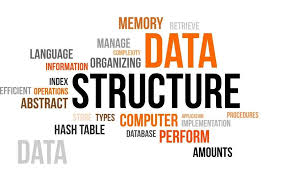Maximizing Efficiency Through Advanced Data Analytics Techniques
In today’s business environment, data has become a vital resource, driving informed decision-making, optimizing workflows, and helping companies stay competitive in dynamic markets. The key to unlocking the full value of this data lies in leveraging advanced data analytics techniques. These sophisticated methods offer deeper insights, allowing organizations to significantly improve operational efficiency.
The Rising Significance of Data Analytics
As companies collect massive amounts of data from diverse sources—such as customer transactions, social media platforms, sensors, and Internet of Things (IoT) devices—the challenge is extracting meaningful insights from this data. Traditional analytical methods are often inadequate for managing the volume, speed, and complexity of modern data streams. Advanced data analytics fills this gap by employing more powerful algorithms, machine learning models, and predictive tools to transform data into actionable strategies.
Today, data analytics has evolved from a competitive advantage into a business imperative for enhancing operational efficiency. Efficiency, in this sense, refers to achieving greater output or performance with fewer resources, less time, and lower costs.
Efficiency Metrics: Measuring Success
Efficiency can be measured using various metrics, depending on the industry and specific operational goals. Common metrics include:
- Cost Efficiency: Reducing operating expenses while maintaining quality.
- Resource Optimization: Ensuring effective use of resources (human, financial, technical).
- Time to Market: Shortening the time it takes to deliver products or services.
- Customer Satisfaction: Delivering value in a timely manner while meeting customer expectations.
Advanced analytics techniques can improve these metrics by providing insights into process optimization, eliminating bottlenecks, and enhancing resource allocation.
Advanced Data Analytics Techniques for Efficiency Gains
1. Predictive Analytics
Predictive analytics uses historical data combined with machine learning algorithms to forecast future outcomes. This technique is invaluable for improving efficiency by helping organizations anticipate demand, streamline supply chain management, and predict customer behavior.
For example, in inventory management, predictive analytics can accurately project future demand, allowing businesses to adjust production schedules and inventory levels. This reduces the risks of overproduction, stock shortages, or waste, all of which impact operational costs and overall efficiency.
2. Prescriptive Analytics
While predictive analytics tells businesses what will likely happen, prescriptive analytics goes a step further by suggesting the best actions to take in response. Using artificial intelligence and machine learning, prescriptive analytics recommends solutions that can optimize performance.
In a manufacturing setting, for instance, prescriptive analytics can recommend the most efficient production schedules, machinery use, and staffing configurations based on variables such as equipment availability, labor costs, and energy consumption. This ensures streamlined operations, better use of resources, and minimal downtime.
3. Real-Time Data Analytics
Real-time analytics enables organizations to process and analyze data instantly as it is generated. This technique is particularly useful in industries where rapid decision-making is critical, such as finance, logistics, and healthcare. By addressing inefficiencies in real-time, businesses can swiftly adapt, reduce risks, and maintain smooth operations.
In logistics, for example, real-time analytics can monitor shipments, traffic conditions, and optimize delivery routes on the go. This leads to quicker deliveries, lower fuel costs, and improved customer satisfaction without adding unnecessary pressure on logistics teams.
4. Text and Sentiment Analysis
Customer feedback is a valuable source of insights for improving operational efficiency. Text and sentiment analysis can process large amounts of unstructured data, including customer reviews, social media posts, and survey responses, to understand customer sentiments and identify areas needing improvement.
For example, if a business consistently receives negative feedback about slow customer service, advanced text analytics can uncover the root cause, whether it’s staffing issues, outdated systems, or process inefficiencies. Addressing these concerns can enhance both operational efficiency and customer satisfaction.
5. Machine Learning and Artificial Intelligence
Machine learning (ML) and artificial intelligence (AI) drive many of the advanced analytics techniques in use today. These technologies allow computers to learn from data and continuously improve without explicit programming, enabling businesses to automate tasks, make accurate predictions, and enhance decision-making.
In terms of efficiency, machine learning algorithms can optimize tasks such as workforce scheduling, predictive maintenance, and fraud detection. For example, AI-powered maintenance systems in manufacturing can predict when machines will likely fail, allowing preventative maintenance to be scheduled, reducing downtime and extending equipment life.
6. Big Data Analytics
Big data analytics involves processing and analyzing extremely large datasets that are too complex for traditional tools. With the explosion of IoT devices, cloud computing, and social media, businesses are inundated with vast amounts of data. Big data analytics helps businesses manage this influx, making data-driven decisions to enhance efficiency.
In healthcare, for instance, big data analytics can analyze patient data from various sources—electronic health records, wearable devices, and genomic data—to personalize treatment plans, optimize resource use, and predict potential disease outbreaks. In retail, big data analytics helps businesses understand customer preferences and fine-tune supply chains to boost efficiency.
Tools for Advanced Data Analytics Implementation
A wide range of tools is available for organizations seeking to leverage advanced analytics techniques. Some popular ones include:
- Tableau: A data visualization tool that transforms raw data into interactive charts, graphs, and dashboards.
- R: A statistical computing language widely used for data mining and machine learning applications.
- Python: A versatile programming language with libraries such as pandas, NumPy, and Scikit-learn, ideal for data manipulation, analysis, and machine learning.
- Apache Hadoop and Spark: Frameworks designed to process large datasets across distributed computer clusters.
- Microsoft Power BI: A business analytics service that enables interactive data visualizations and real-time business intelligence.
- Google Analytics: A widely-used web analytics tool that helps organizations optimize their online presence based on customer behavior.
These tools can enhance how businesses use their data, driving greater efficiency across different operational functions.
Best Practices for Implementing Advanced Data Analytics
Successfully using advanced data analytics techniques requires more than just adopting technology. To truly maximize efficiency, consider the following best practices:
1. Define Clear Objectives
Before diving into data analytics, businesses need to clearly define what they aim to achieve. Whether it’s reducing operational costs, improving customer service, or accelerating production, clear objectives will guide the analytics process.
2. Ensure Data Quality
Accurate, up-to-date, and complete data is the backbone of any successful analytics strategy. Organizations must prioritize data quality before conducting analysis to ensure reliable insights.
3. Focus on Relevant Metrics
Not all data points are created equal. It’s essential to focus on key performance indicators (KPIs) that directly impact operational efficiency, such as production times, error rates, or customer satisfaction metrics.
4. Leverage Automation
Automation plays a crucial role in improving the efficiency of data analysis. Automated machine learning models and data collection tools enable faster, more accurate results, providing real-time insights that enhance decision-making.
5. Promote a Data-Driven Culture
Organizations must foster a data-driven culture where employees at all levels use data to inform their decisions. Providing access to data and analytics training can empower teams to make smarter, efficiency-boosting choices.
Conclusion
Advanced data analytics techniques are transforming how businesses operate, offering unprecedented opportunities to enhance efficiency. By leveraging predictive and prescriptive analytics, real-time data analysis, and machine learning, organizations can optimize processes, cut costs, and improve outcomes. As data continues to grow in importance, businesses that embrace these advanced methods will position themselves for long-term success in an increasingly data-driven world.
To harness the full potential of these techniques, it’s essential for professionals to have the right training. The best Data Analytics Training Course in Delhi, Noida, Gurugram, Mumbai, Navi Mumbai, Thane, and other cities across India equips learners with the skills and knowledge necessary to implement these advanced methods effectively. With comprehensive training, organizations can ensure their workforce is prepared to tackle data challenges head-on, driving both operational efficiency and innovation.
To maximize efficiency through data analytics, companies need to build a solid infrastructure and nurture a data-centric culture. When executed properly, the potential for improvement is limitless.














Post Comment